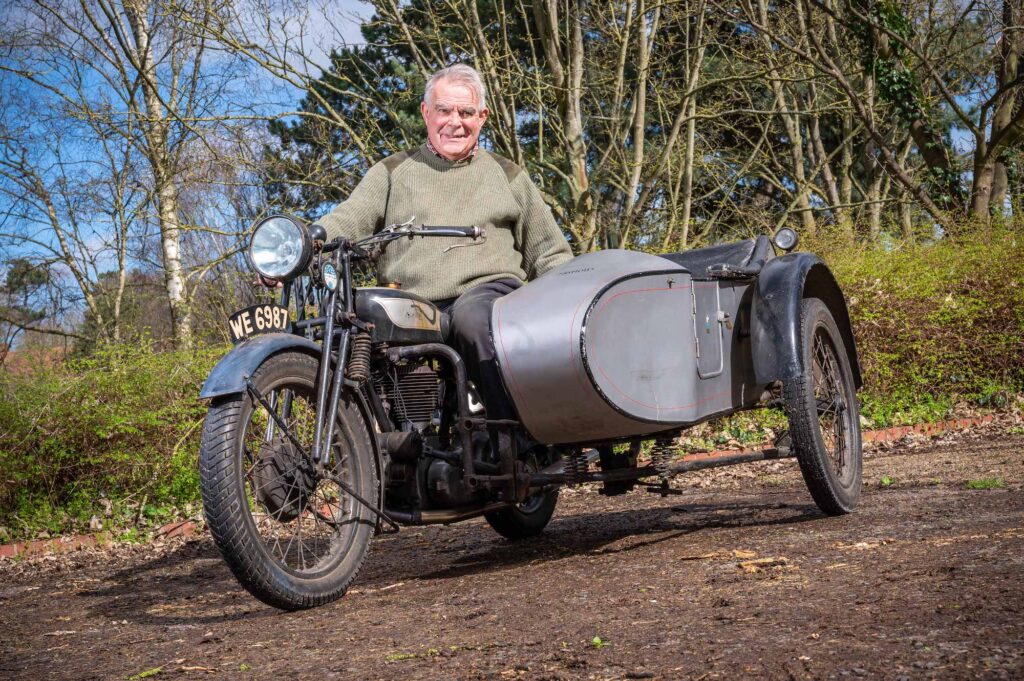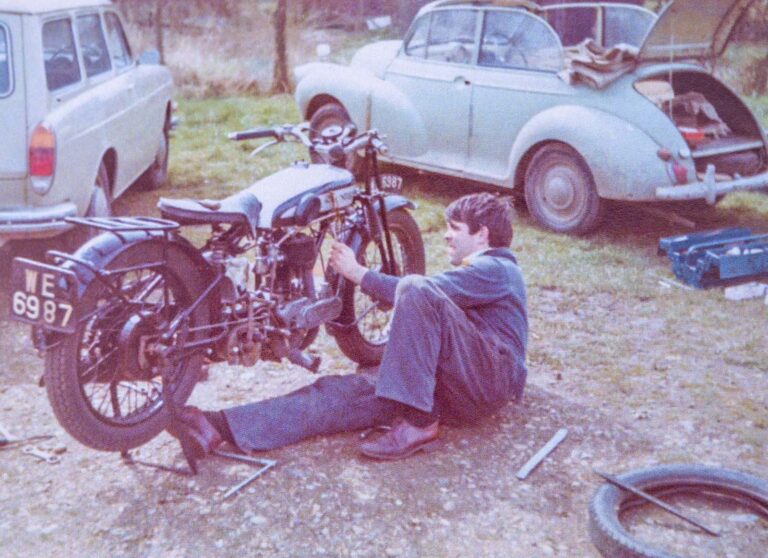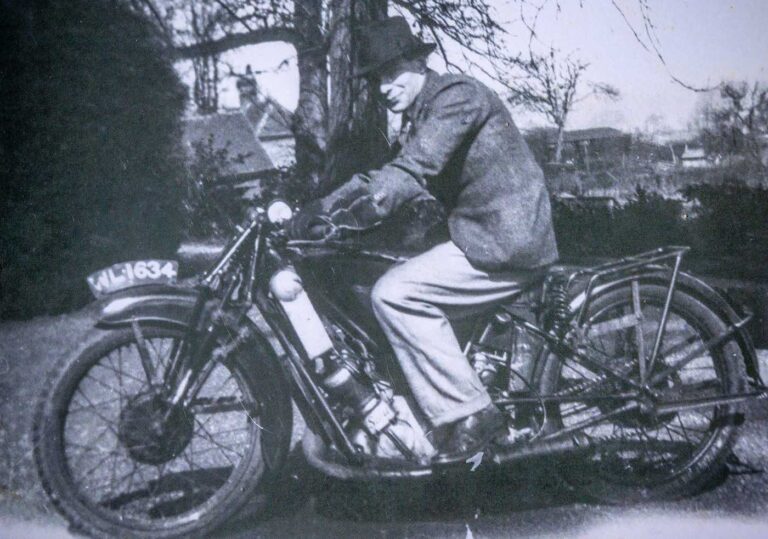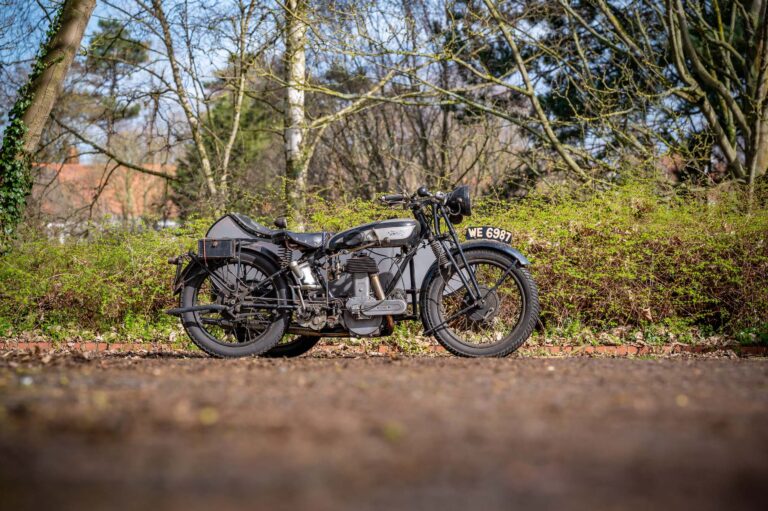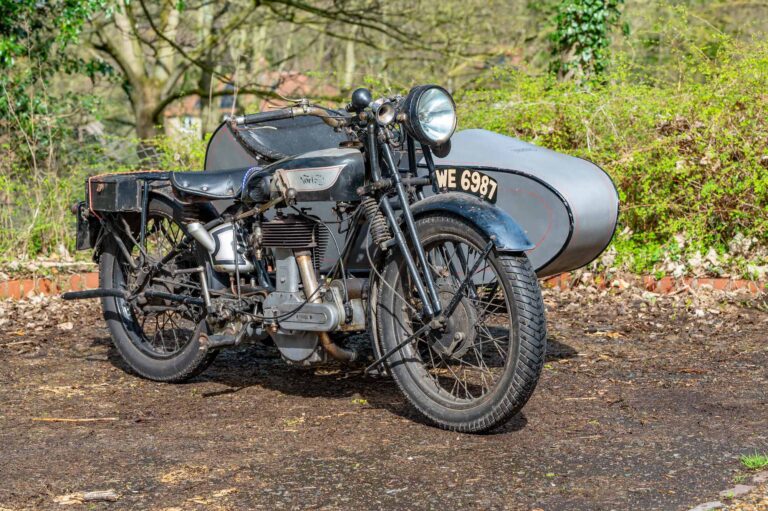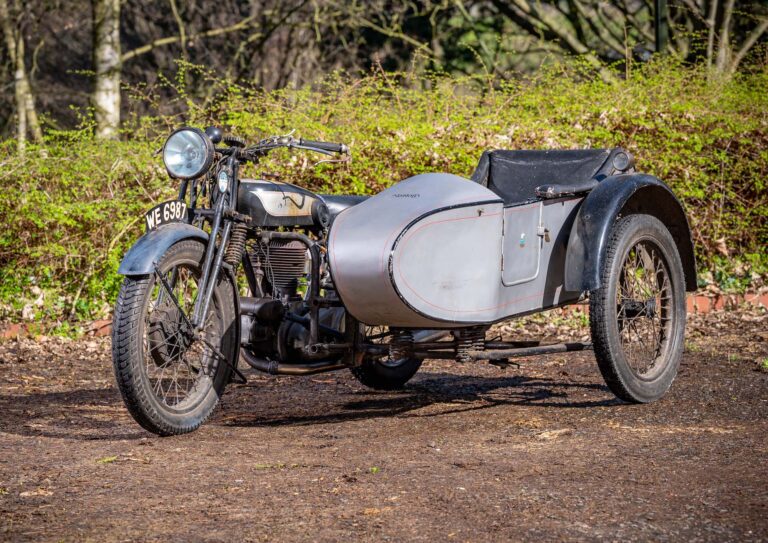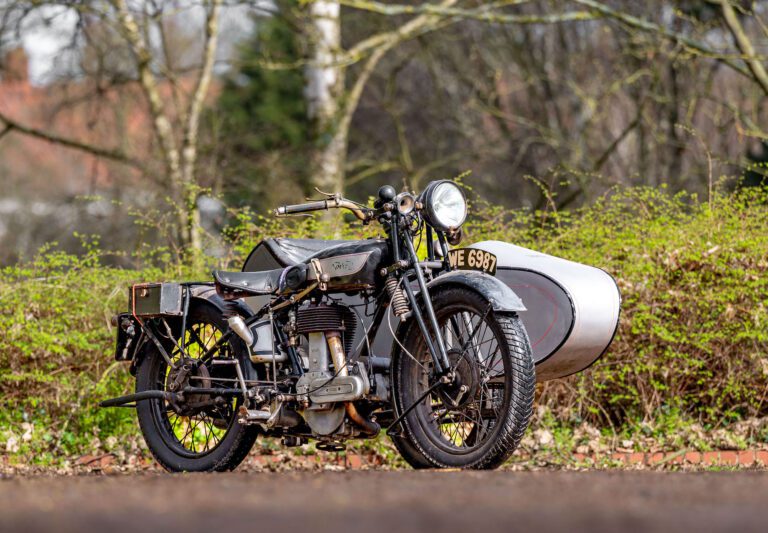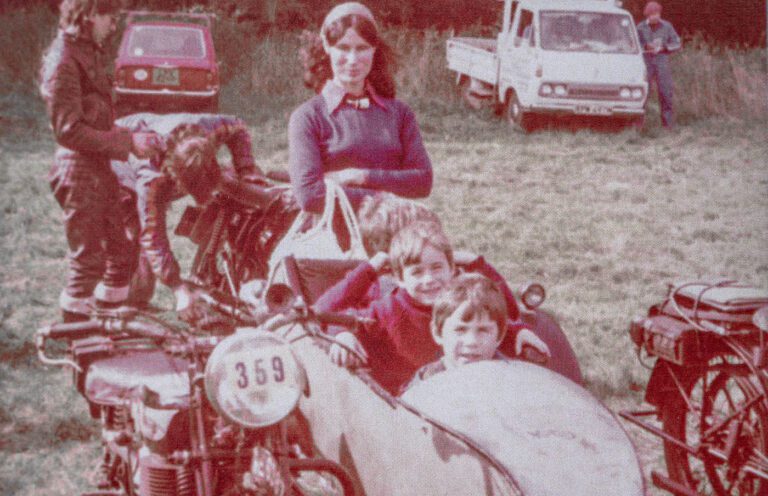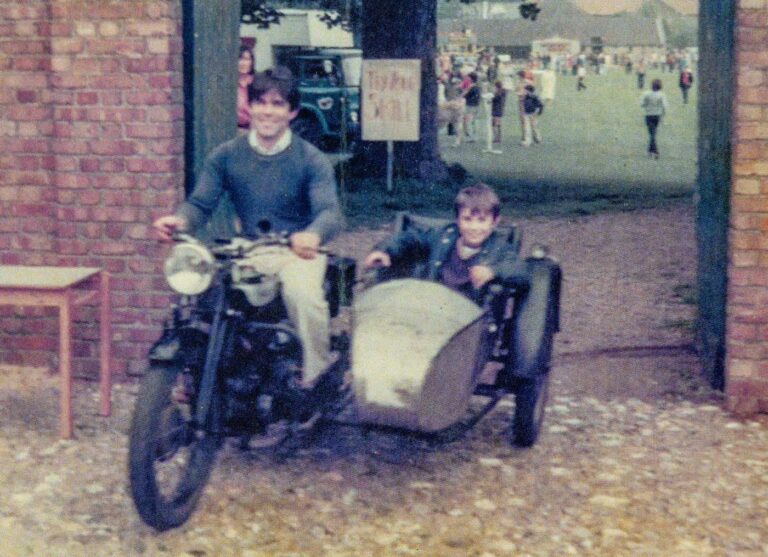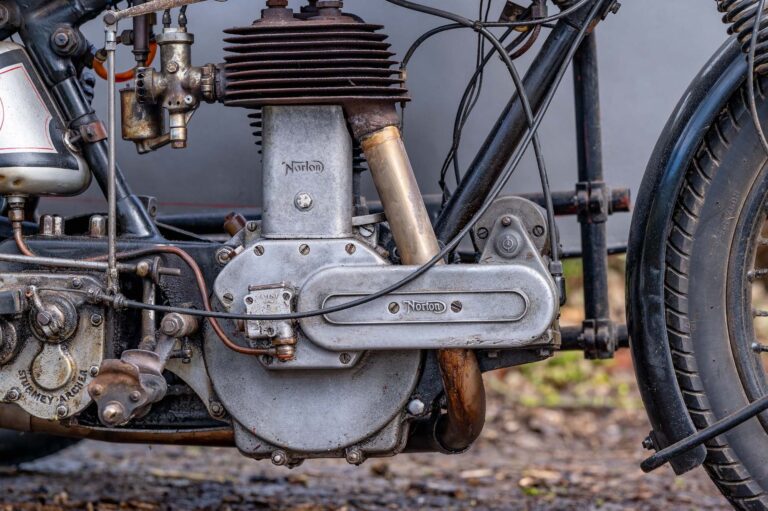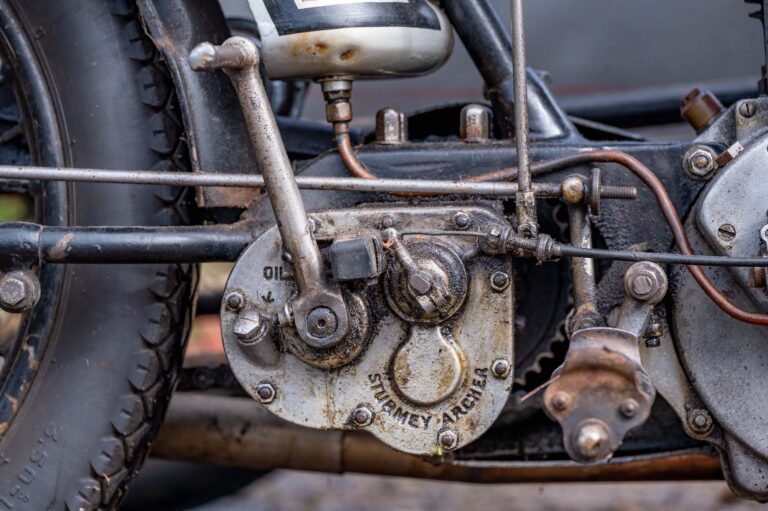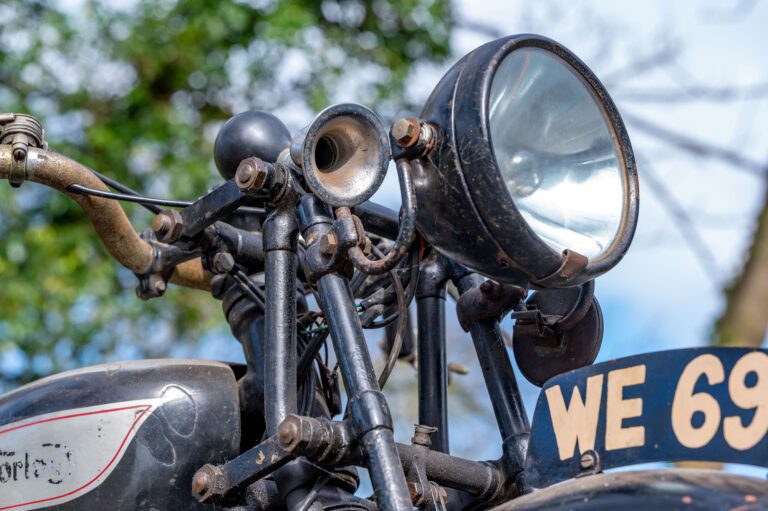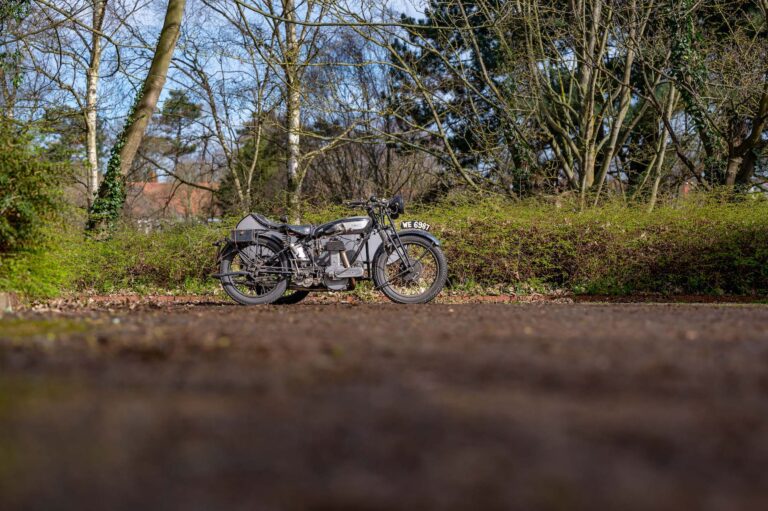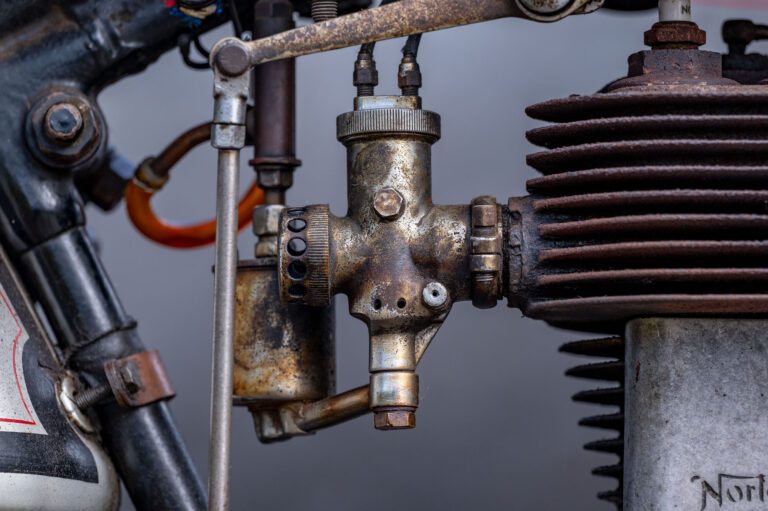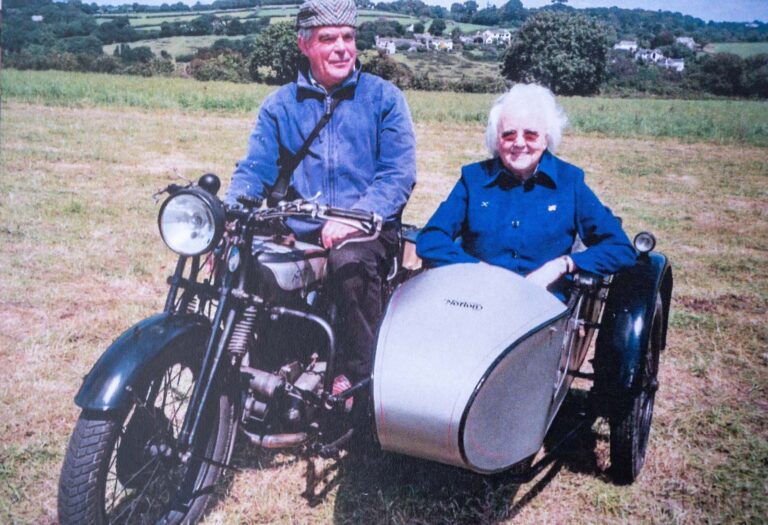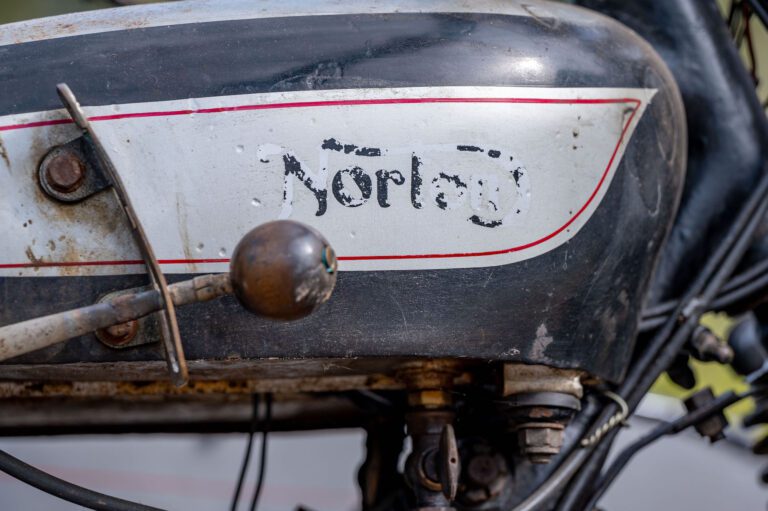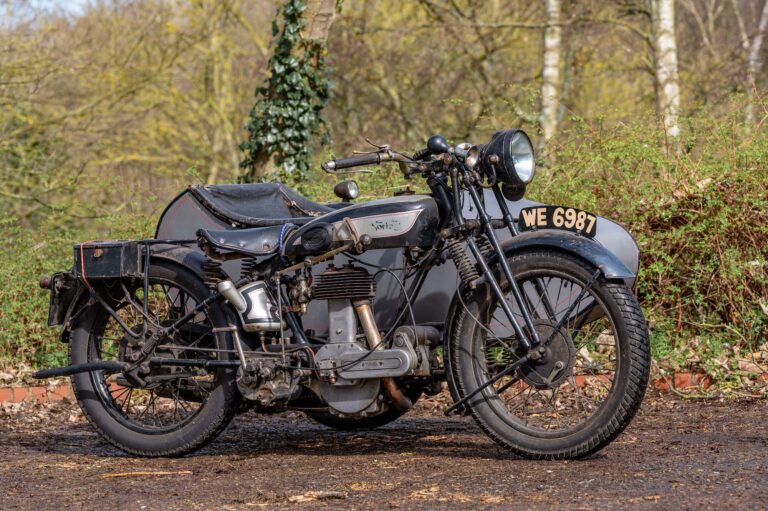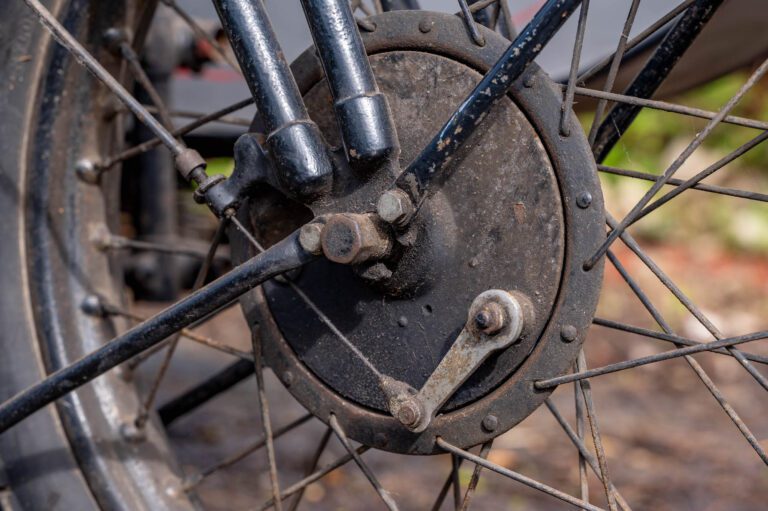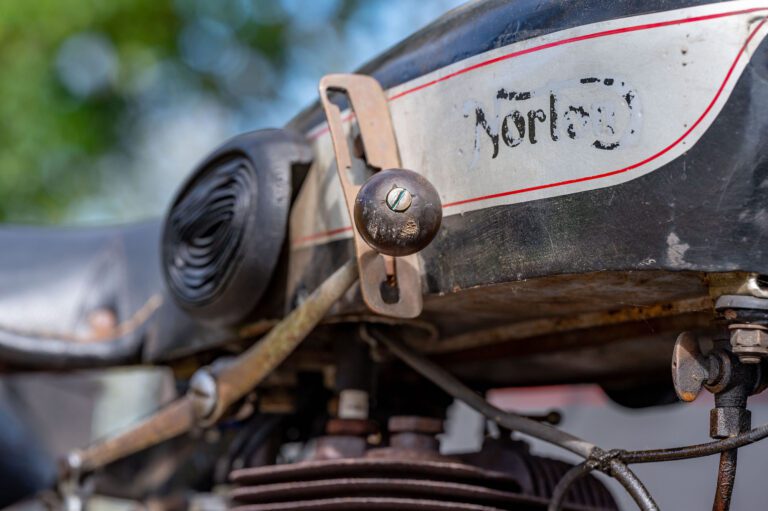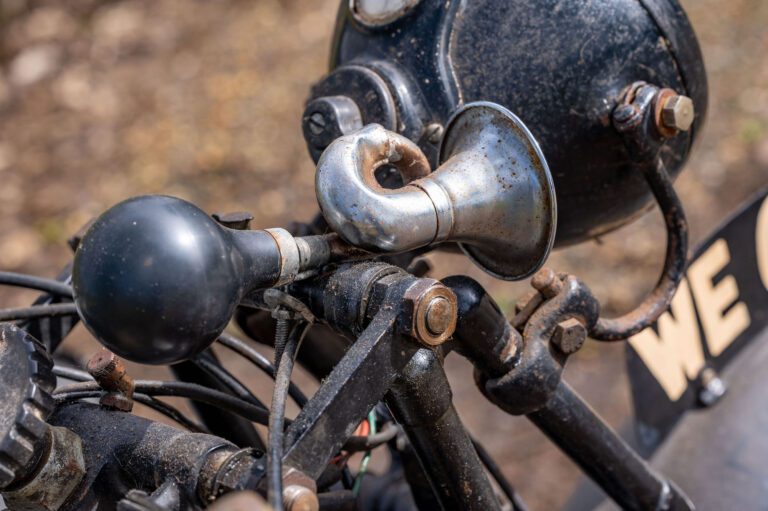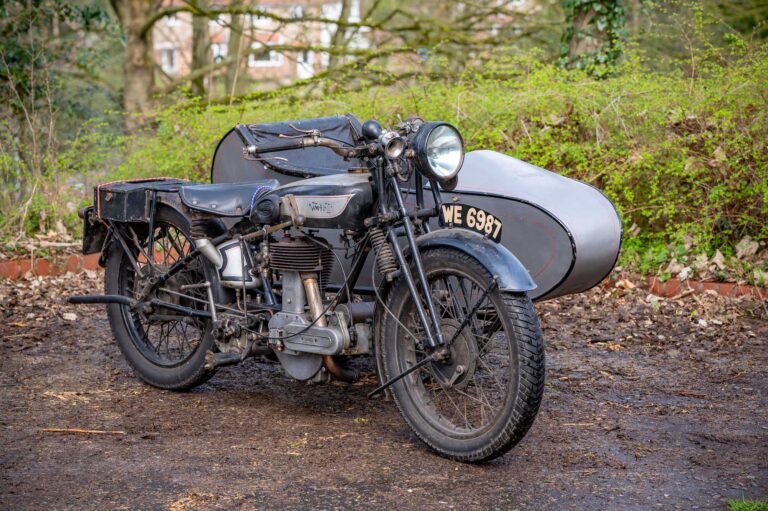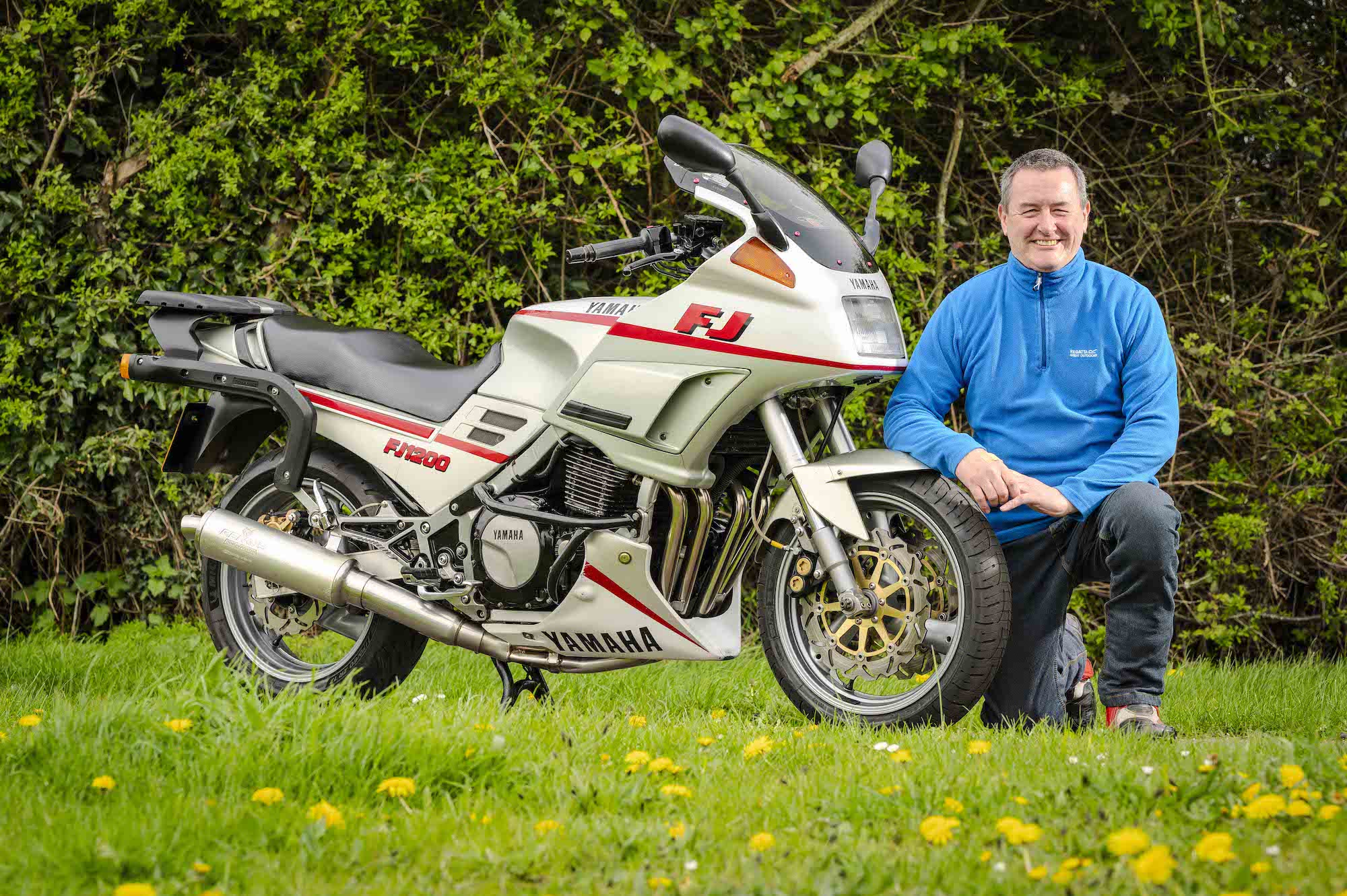Norman Lister is leafing through a calendar created to commemorate 60 years since he bought his 1928 Norton Big 4, and the memories come flooding out.
Here he is tinkering with the bike as a young man in Milton Keynes; sons John, Henry, and Thomas crammed into the sidecar at the Henham Steam Rally; with Henry at the school fete; and transporting the gala queen in Cornwall.
The Norton has followed him around the country over six decades from his native London, where he bought it, to Hertfordshire, Norfolk, Cornwall, and back to Norfolk.
It predates his marriage to Sue by five years and, of course, the birth of his three boys.
Little wonder that Norman has never been able to part with the old bike, a 600cc side-valve single that became known as the Big 4 because of its 4hp tax rating.
Hopeful for centenary ride
“It will be 100 years old in five years’ time, and I’ll be 85,” he says, “so I hope I’m still able to take it out for a ride.”
“I’ve never thought about selling it because I was enjoying it. Even if I lost my marbles and couldn’t ride it, would I get rid of it? Not readily, because I love it.”
Norman owes his love of motorcycling to his father, Arthur, who is pictured on the calendar astride a Scott Flying Squirrel.
“That’s why I became interested,” he says, “I got the bug from him.”
His first bike was a Vespa, which he rode while working in Uganda with the Voluntary Service Overseas charity after leaving school.
“It wasn’t much help, because on the dirt roads there it skidded very easily,” he remembers.
“Then I passed my test here on an AJS 250 which, I may say, was rather a dull bike.”
Two Nortons followed, a Model 50 and a 650SS bought from Gus Kuhn at Brixton, which Norman still owned when, in 1963, he discovered the Big 4 belonging to a near neighbour who is believed to have owned it from new.
“He had a stable of bikes, including the Norton and a Brough Superior SS80, but he was old and had become absent-minded,” he says. “My friend bought the SS80, and I bought the Big 4 virtually for the same price as he must have bought it new, which I think was about £34 including the Watsonian, single adult, quick-detachable sidecar.”
Rugged Big 4
The rugged Big 4, launched way back in 1907, was in continuous production until 1954, with nearly 5,000 sidecar outfits built during the second world war to carry two or three men plus fighting equipment over rough terrain.
It was used for reconnaissance and carrying ammunition to front line troops, and was similarly popular among sidecar users in civilian life.
The bike’s 633cc, air-cooled engine was Norton’s largest and most powerful side-valve unit, its ample low end torque perfectly suited to lugging sidecars and their passengers.
“It’s designed as a sidecar tug, a plodder,” says Norman. “I would say you’d be hard pressed to go above 40mph.
“I’ve only once or twice used it as a solo. You can quickly detach the sidecar to get it through a gate, for example, but it is also attached to quite a bulky frame, so to make it solo you’ve got to take the side frame off the bike, which takes some time.”
With the 650SS available for daily use, the Big 4 was “stabled for sunny day outings and state occasions”.
“The bikes were perfect in London,” he says. “I was an architectural student and it was a means of getting to college.”
Life changed fast
In 1968, life changed fast for Norman, with marriage to Sue, qualification as an architect, and a move from London to a job in Norwich.
The Big 4 came along in the removal lorry and, when the couple’s three sons came along, was pressed into service for family runs out to the Henham Steam Rally, near Southwold on the Suffolk coast.
“You could fit all three little boys in the sidecar – John, the youngest, would have been about five here (pictured),” he says. “You’re in danger of knocking your teeth out on the front of the sidecar.
“For several years, that was the annual treat – we’d go down to Henham, where you’d meet other bike lovers and see the traction engines, and camp overnight.
“We had a car by then, so Sue would follow us in case we broke down. There was no roof on the sidecar, but it did have a windscreen at the time, and a sort of tonneau cover, but that’s like a little apron really. So yes, we did get wet.”
The Norton would also appear at the Norwich School annual fete, pictured here with Henry in the sidecar.
“I took it down there for people to enjoy a run around the playing field,” says Norman. “The kids loved it, but I’m not sure about the people playing cricket.”
Or the groundsman, presumably…
Scottish adventure with the Big 4
There was an adventure further afield when Norman and his younger brother, also Arthur, headed for Scotland with the Big 4.
“I can’t remember exactly how we got there, but there was definitely a goods carriage that British Rail obligingly let us on, provided we emptied the fuel out,” he says.
“The train carried us to Perth, and we then rode up into the Highlands where we stayed near Invergarry with friends who had a shed where we could put the bike to keep it out of the rain.”
The old Norton has very rarely suffered any mechanical problems but, on this trip, it did.
“We were at Spean Bridge, near Fort William, when the fuel pipe detached between the fuel tank and the carburettor, which was obviously dangerous,” says Norman.
“You could turn off the petrol with a tap, however, and luckily I was near a garage where they soldered a copper pipe on there and then.
“We were up there for about a week, and took turns riding the Norton. It was amazing, really good fun, and then we came back on the train again.”
Cornwall heyday
The old bike’s second big move was from Norfolk to Cornwall in 1995, where Norman says it enjoyed “its heyday”.
It was in the south west that he joined the Vintage Motor Cycle Club (VMCC).
“It was pure pleasure,” he says. “We used to have vintage runs that could be anything up to 120 miles in a day – that’s about as much as you can manage on a machine of that vintage.
“It was a good club because you’d stick together in a convoy system where, when you come to a junction, the lead rider stops to make sure everybody turns right and watch out for any stragglers.
“I was usually a straggler but, with the sidecar, I could carry extra fuel and oil for anybody else who runs out en route.
“They had a very good run called a ‘creepy crawly’, which had pre first world war bikes like the belt-driven Triumph. Those bikes preferred never to stop, so at a crossroads you’d hold up the traffic to let the early bikes go through without having to stop.
“I remember these old books, Hints and Tips for Motorcyclists and that sort of thing, which told you how to put out a carburettor fire – beat it out with your cloth cap, or throw mud at it.
“People did break down, but we never had any other mishaps, touch wood.”
Runs to the seaside
While living in the village of Feock, between Truro and Falmouth, Norman and the children would enjoy runs to the seaside, where the bike would always attract attention.
And every year, he would use the Big 4’s sidecar to convey the Gala Queen to the annual village gala.
“Sue also went in the sidecar on a number of occasions, and enjoyed it because it’s comfortable and you don’t have to talk to your husband, do you?” he smiles. “Well, you can but you have to shout.”
It was in Cornwall through the VMCC that Norman met Sam Lovegrove, of TV’s Junk and Disorderly and Shed and Buried fame.
“He restored the sidecar, and did a number of things to tune the bike and get the gearing correct,” he says. “He’s a very skilful engineer and restorer of cars and motorbikes, and he really was a great help. To take it over to his workshop and spend the day with him was a pleasure.”
While the sidecar was restored and treated to a paint job, the bike itself was not.
Retaining the patina
“It was a conscious decision,” says Norman. “These days you can go for a kind of showroom finish, but people who have gone to that extreme can hardly bring themselves to go out for a ride in case it rains. I think this is called, not quite ‘as found’, but not far off it.
“For example, I know the front wheel is off a Royal Enfield, so as a collectors piece it’s a bit of a mongrel.”
Norman and Sue headed back to Norwich to retire in 2014, and the Norton was joined by a Honda Wave scooter and an electric bicycle to nip around the car unfriendly city.
He’s still in the VMCC, and has taken part in club runs, but not as often as in his Cornwall days.
“I’ve been very lazy, partly because Covid put paid to any gatherings for a couple of years, and also the club runs weren’t convoys, so I was always left behind,” he says.
“Membership is now open to bikes more than 25 years old, and that includes some very sporty bikes that can go 100mph, so I’m left standing.”
“There was always some kind person who would come up behind, though, which happened when my prop stand lost its spring and dragged along the road on the way to Walcott (in north Norfolk) on a run.
“They’re good people, and very knowledgeable, but we really need to have a ‘creepy crawly’ run for the older bikes. It’s becoming much more of a fair weather vehicle in any case.”
The Norton’s future
Having already established that Norman has no intention of selling the bike he’s owned for three quarters of his life, what of its longer-term future?
“I think it will go to Henry, but we’ll see what gives,” he says. “He’s the only one of the boys who has ridden it.
“If you’re used to modern bikes, the gears are a whole different ball game. It also sometimes overheats; it doesn’t like the heat because the fuel evaporates before it gets to the combustion chamber.”
“So it’s very different from Henry’s modern Fantic Caballero.”
Indeed, a modern bike rider unacquainted with the wonders of pre-war motorcycles would be initially nonplussed by the array of controls, including the advance / retard lever, air mixture lever, car-style gear stick, and lever-operated throttle.
Similarly, fellow motorists are less aware of the limitations of such antiquated bikes.
“With the traffic nowadays, you have to pick your route,” he says. “If I’m plodding up a hill and I overheat, there could be a big queue of people behind me getting rather angry.”
We go through Norman’s garage, complete with oil drip tray, on the way to the early spring sunshine where the old bike is being photographed.
“It nearly always leaves a puddle of oil wherever you go, which is not very popular,” he smiles. “But the joy of it is that it’s entirely non-digital.”
